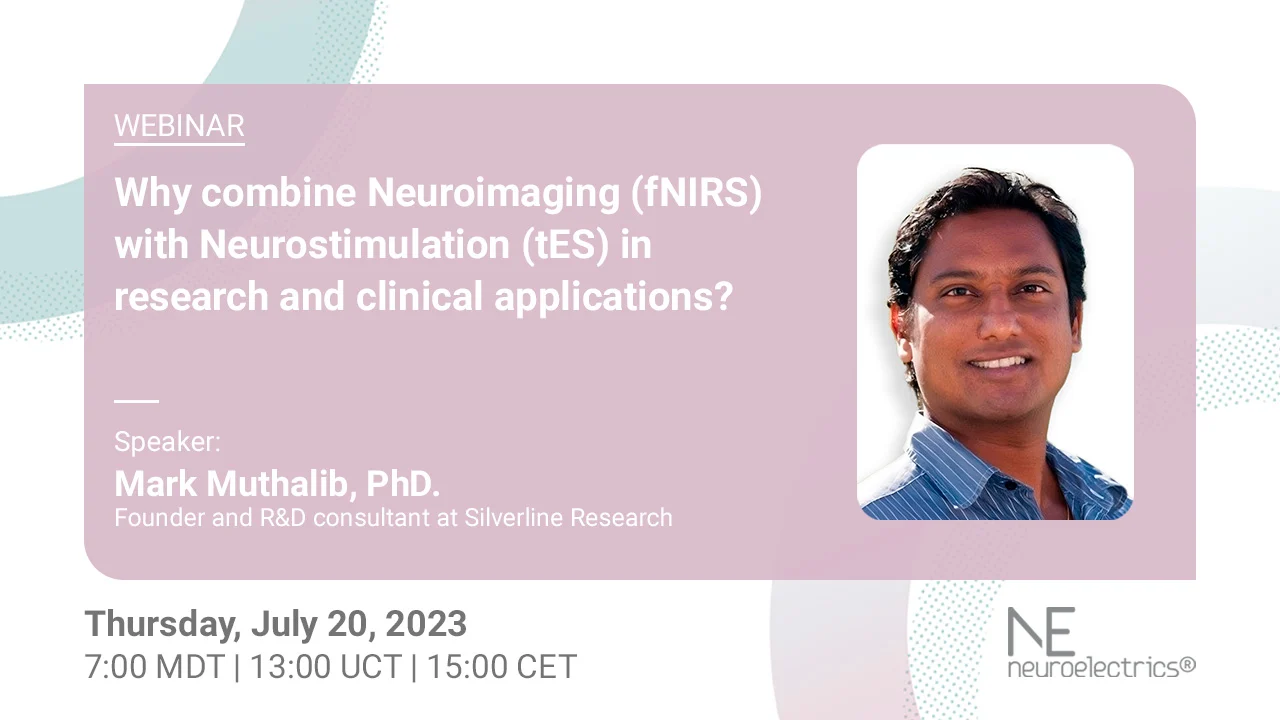Webinar | Why combine Neuroimaging (fNIRS) with Neurostimulation (tES) in research and clinical applications?

20 July, 2023 - 20 July, 2023
In the last 20 years there has been a dramatic increase in the application of transcranial electrical stimulation (tES) to modulate human brain function and behaviour in research and clinical trials. However, a “one-size fits all” stimulation dosage approach may not be the most efficacious due to the individual variability in responses to stimulation. In order to individually optimise stimulation parameters of electrode montage, intensity, and duration before stimulation, neuroimaging and modelling approaches are becoming a common practice in the tES field. However, not having an effective and easy to use online approach to validate such pre-stimulation dosage parameters is a limiting factor to the tES field due to the difficulties in directly measuring the induced electric field in the brain. fNIRS neuroimaging offers such a solution, as the method can indirectly measure neuronal activity via cortical hemodynamic signals modulated during tES without interference from the electric field, and moreover, since it is now becoming recognised that neurovascular modulation may be a direct effect of tES, and as such fNIRS has the added value of being at the appropriate level (i.e., blood-brain barrier) to measure such direct and indirect effects of tES, and be used to individually guide tES dosage parameters.
The presentation will provide a background to the tES and fNIRS technology and mechanisms, and provide applications for the combined tES and fNIRS technologies in research and clinical applications. Demonstration of fNIRS/EEG closed loop tES using Starstim tES-EEG-fNIRS system and OptEStim software will follow the presentation (Silverline Research).
Get to know our speaker
Dr. Muthalib is Founder and R&D consultant at Silverline Research. He holds a PhD in Human Neurophysiology from Edith Cowan University, Australia and has advanced qualifications in Applied Science, Technology-Innovation Management from the University of Queensland, Australia. His expertise is in the research and development of neurotechnology solutions to optimize human performance and brain neuroplasticity through non-invasive brain stimulation (tES, tNIRS, TMS) and multimodal integration with non-invasive neuroimaging (fNIRS, fMRI, EEG) techniques that allow to monitor brain state neurovascular dynamics during brain stimulation and cognitive, movement, and virtual reality performance. He has published over 70 journal articles in the field of human neurophysiology ranging from neuromuscular fatigue/damage in healthy people to neurorehabilitation of Stroke and Parkinson’s clinical populations. Since 2012 he has been an Associate Researcher at EuroMov-DHM at the University of Montpellier, France where he established the first platform to integrate HD-tES with fNIRS/EEG neuroimaging that led to the development of the Starstim tES-EEG-fNIRS integration and OptEStim closed-loop solution offered by a partnership between Silverline, Neuroelectrics and Artinis Medical Systems.
